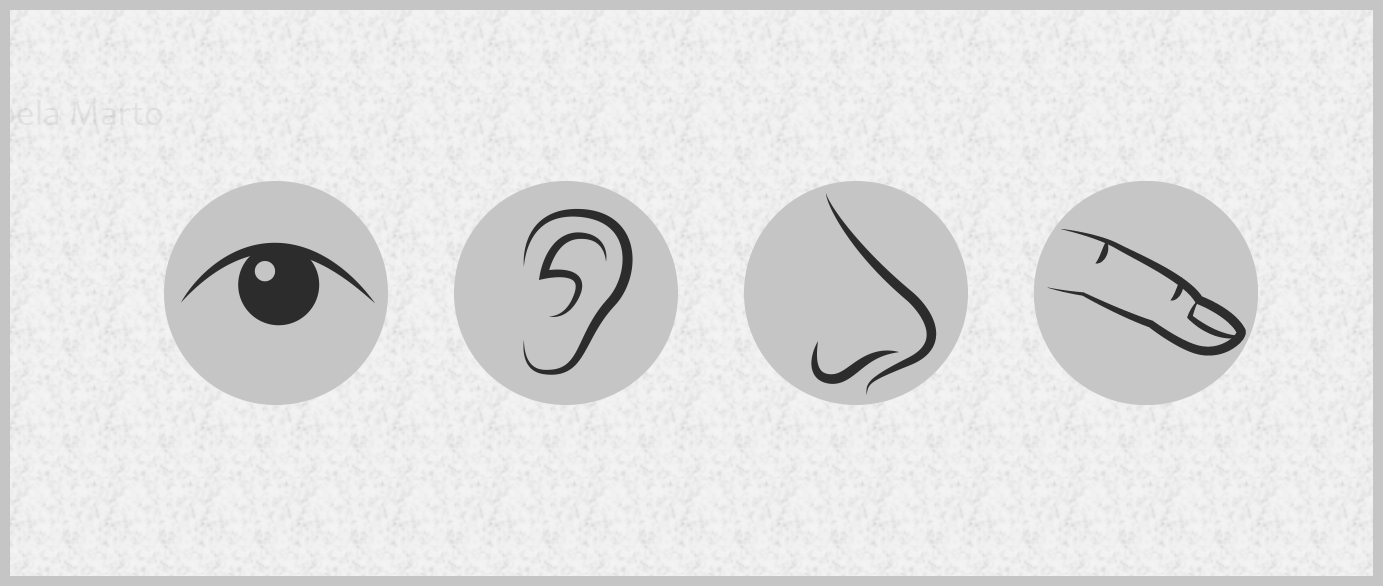Multisensory in Cultural Heritage?

The majority of cultural heritage sites are shaped for visual consumption. But we, humans, perceive the world with different senses and in real-time. Thus, multisensory approaches emerge to prize and enhance users’ experiences. What stage has been reached these kind of applications?
A scope of multisensory experiences in cultural heritage sites, regarding to the sesnes of sight, audio, smell, and haptic, was presented in the International Conference on Graphics and Interaction (ICGI 2018) in Lisbon, in 15th of November, 2018.
But why is this important?
SensiMAR is a multisensory approach for cultural heritage sites. More specifically, to provide a multisensory experience in the Roman ruins of Conimbriga, Portugal.
Thus, a research related to previous studies regarding to stimuli stimulation was needed. This is a work in progress, and a deepen research related to multisensory systems is important to advance. The current research allow to affirm that multisensory solutions can enrich users’ experience while more than one stimulus is evoked.
Visual Stimulus
Visual stimulus is the most common sense explored when using virtual reality or AR technologies.
According to research, AR implementations among cultural heritage has a significant role in the engagement perceived by the users.
Its adavantes are well known and include a positive effect on preserving history, enhancing visitor satisfaction, generating positive word-of-mouth, attracting new target markets, contributing to a positive learning experience, enhancing cultural and historical value to cultural heritage spaces, among others [1].
Some examples that have tested and proved advantages related to the use of AR include its usage in travel guides, touristic visits, inside museums, or within archaeological sites (shown in the following picture).

Audio Stimulus
Presenting benefits for user perception, audio stimulus is found both non-musical and musical.
Amid various exhibitions, the advantages of its use in culturual heritage includes are known. Some examples of these exhibitions are «A House Full of Music at the Mathildenhohe Darmstadt», «Soundings: A Contemporary Score at MoMA, New York», «Soundscapes» at the National Gallery in London, «Art or Sound» in Venice, or the exhibition of sound objects within museum. This last example, objects like an antique cuckoo clock (the following figure), an LP record, or a spool of magnetic tape containing a recording were there to be seen and heard.

Olfactory Stimulus
The use of olfactory stimulus are known for playing a central role in recollecting personal memories and emotions.
Exhibitions like «The Smell of War», «Olfactory Labyrinth», «The Beauty of Decay: SmellScape Central Park», «Desire and Danger», or «Universal Scent Black-box», had with positive results helping to get enhanced experiences.
Haptic Stimulus
Frequently evaluated when handling real objects instead of technology devices which simulates the perception of touch. An example of handlingreal objects can be found in a study which considered the interaction with 3D prints of Egyptian sculptures.
Regarding to the use of technological devices, the sense of presence on task performance was evaluated through vibration gloves. For cultural heritage, a haptic bow was developed in oreder to allow users to simulate the interaction with a bow from Medieval Ages, in an interactive virtual trainning camp. More information related can be found in their website.

[1] M. C. tom Dieck and T. H. Jung, “Value of Augmented Reality at Cultural Heritage Sites: A Stakeholder Approach,” J. Destin. Mark. Manag., vol. 6, no. 2, pp. 110–117, 2017.
[2] A. Marto, A. Gonçalves, and M. Bessa, “The Scope of Multisensory Experiences in Cultural Heritage Sites,” in International Conference on Graphics and Interaction [in press], 2018.
 SensiMAR
SensiMAR